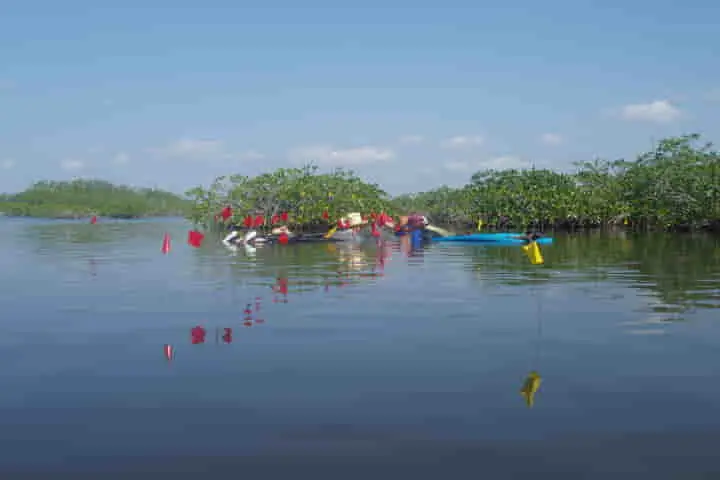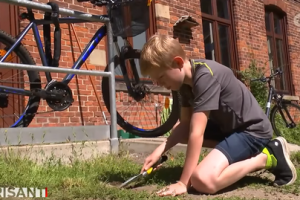Even though the Mayan civilisation had attained dizzying heights in construction of grand temples and palaces with stone in Central American rainforests they lacked something very basic for life, salt.
The source of this basic ingredient was located in the coastal region where it was found in Yucatan coast salt flats or it could be obtained by boiling brine along the Belize coast. The question then arises as to how Maya received the regular supply of salt?
Heather McKillop, a Maya archaeologist in Louisiana State University and her group have excavated salt kitchens which were well-preserved below the sea floor in Belize in oxygen-free sediment, according to an article in sciencedaily.com. In these kitchens water from the sea was boiled over fire in clay pots in buildings made of pole and thatch.
Not much is known about the salt workers and their life who may have been seasonal or daily workers hailing either from inland or the coastal areas. This lack of information leaves a gap in drawing the complete picture of salt production and distribution.
Also read: Human eye pupils are key to counting and detecting quantity
In an article titled "Briquetage and brine: Living and Working at the Ek Way Nal Salt Works, Belize", published in Ancient Mesoamerica, a journal, new discoveries about the salt industry organisation which supplied the basic dietary requirement inland are mentioned. It is penned by McKillop and LSU alumna Cory Sills – a University Texas-Tyler associate professor.
The duo McKillop and Sills started work to search for the places where the salt workers lived in order to understand the chain of salt production. Their field work at Ek Way Nal, where the Paynes Creek Saltworks is located, due to the pandemic was postponed and so they focused their attention on the material received earlier in the LSU Archaeology lab for study. This included wood samples in hundreds from pole and thatch buildings and also shards of pottery.
McKillop, explaining the strategy to continue research in the lab said: "I decided to submit a wood post sample for radiocarbon dating from each building at Ek Way Nal to see if they all dated to the same time, which was suggested by the visibility of artifacts and buildings on the sea floor."
The data of the dates helped McKillop to identify the sequence of building construction. These commenced at the height of the Mayan civilization that is the Late Classic and went right up to the Terminal Classic, a period when inland city states’ leaders were losing their grip, leading to desertion of the cities by 900 AD.
The Thomas & Lillian Landrum Alumni Professor in the LSU Department of Geography and Anthropology, McKillop observed: "Using the well-studied site, Sacapulas, Guatemala, as a model, worked well to develop archaeological expectations for different activities for brine boiling in a salt kitchen, a residence and other activities, including salting fish."
The two in their article talked about a three-part building construction sequence which included salt kitchens, minimum one residence and an outdoor area where salting and drying of fish took place.
Also read: Siberian dogs reveal secret of ancient trade links between snowy Arctic and the Caspian Sea
McKillop in her book “Maya Salt Works” reports that through the new analysis it is estimated that 10 salt kitchens were busy producing salt at the Paynes Creek Salt Works.
Summing up the highlights of the research McKillop said: "The research underscores the importance of radiocarbon dating each pole and thatch building at the salt works in order to evaluate production capacity of this dietary necessity. The research also shows the value of individually mapping artifacts and posts on the seafloor at the underwater sites in order to interpret building use.”
She went on to add: “Using Sacapulas salt works as a model from which to develop archaeological correlates fits with Ek Way Nal and suggests the Maya living permanently at the community were engaged in surplus household production of salt that was well integrated in the regional economy, allowing them to acquire a variety of nonlocal goods," she said.




















